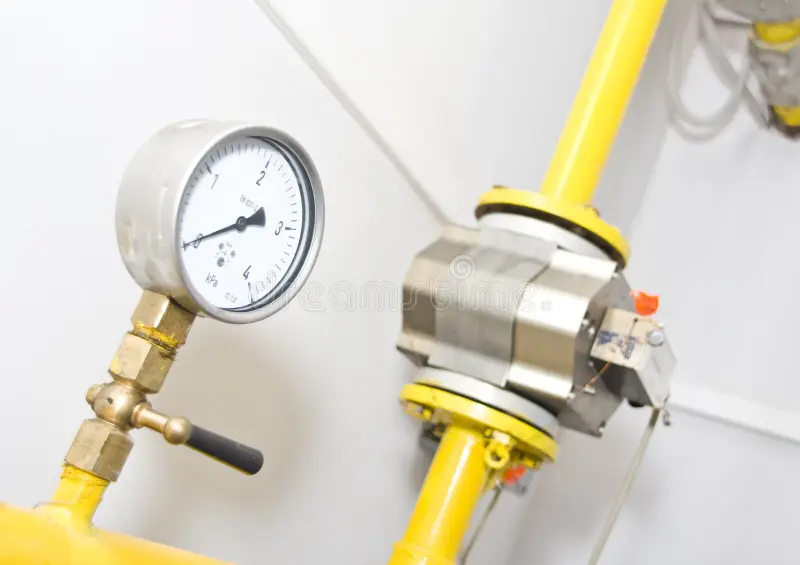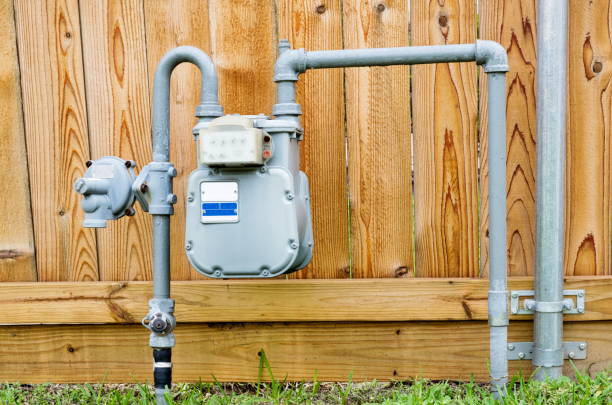

A gas metre keeps track of how much gas your home uses. Energy providers receive the data recorded in gas metres and charge consumers accordingly.
If you want to keep an eye on your gas consumption and steer clear of those shockingly high energy bills during the winter, it’s helpful to be aware of the precise spot of your metre if your home has many gas appliances, such as stoves, ovens, and heating systems.
In this blog post we’ll cover everything you need to know regarding your gas metre so you can confidently read your gas metre and better understand your energy consumption.
As mentioned, there are two types of gas metres – one is gas imperial metre and the other is gas metric metre.

The former uses cubic feet when measuring gas consumption. On the display, you will see five black numbers, the decimal points, and then more numbers. Older residences typically still have this type of gas metre.
In contrast, gas metric metres measure gas consumption in cubic metres. This one uses a digital display of numbers on its panel; typically, four black digits and two red numbers. This gas metre type is commonly found in modern homes and businesses.
The condition and layout of a property will determine where the gas metre will be positioned. It is advised that the gas metre is in a bright, easily-reachable spot so you can read the readings clearly. In most houses, you may find the gas metre right next to the electricity metre, which is often situated either near the front doorway or along the house’s side.
On the other hand, gas metres in multi-unit buildings, such as apartments or townhouses, are often found in the basement, parking lot or beneath the kitchen sink. Make sure you are reading the right metre; they should all have unit numbers on them. Your landlord or building management should be able to help out if you are unable to locate your gas metre.

There are differences in reading an imperial gas metre and metric gas metre. Regardless of the type, it is wise to verify your readings to ensure accuracy and reliability. Taking a moment to double-check ensures that you’ve captured the numbers correctly, which can be crucial for identifying discrepancies and maintaining precise records.
For digital gas meters, a slight adjustment is necessary when interpreting the readings. You’ll notice a decimal point within the number sequence. To obtain the accurate reading, simply move the decimal point two spaces to the right. For example, if the display shows a reading of 16.523, it should be recorded as 1,653.
Confused about gas meter readings? Let the professional gas fitters at Melbourne Gas Plumbing help you!
If you own a residential or a commercial property, knowing how to interpret your gas metre readings is crucial to track your energy use and be charged with a precise amount.
If your numbers remain relatively constant or stable from month to month, there’s nothing to worry about. A higher reading, on the other hand, could be due to a number of things, like installing a new gas-powered equipment, increased usage, or even a leak – which you should look more into.
If you’re interested in learning more about how to read your gas meter accurately, our team at Melbourne Gas Plumbing is here to help. We specialise in all aspects of gas-related needs – from gas meter installations to gas line connections and maintenance tasks.
Whether you’re facing an emergency gas leak or simply need routine maintenance, you can count on us to deliver top-notch solutions with professionalism and expertise. Contact us today!


Fill the form below and we’ll get back ASAP!

MGP! Thank you for help, honest pricing and high quality work. Thank you to Joe for pricing and the boys involved for replacing my hot water tank and fixing my gas leak for a reasonable price. 5 star response, 5 star service and 5 star price.
Joe was great. Very professional and quick. Gas hot water heater needed replacing, he was honest and upfront about what our options were. System was sourced and replaced within a couple of hours.
Fantastic service very responsive Joe is highly recommended and works very clean and neat..... good job well done....very happy... will use again and again

At Melbourne Gas Plumber, we're here to handle all your gas plumbing needs throughout Melbourne. With over 40 years of experience, we bring extensive local knowledge and expertise to every job.
QUICK LINKS
OPENING HOURS
Open 24/7
